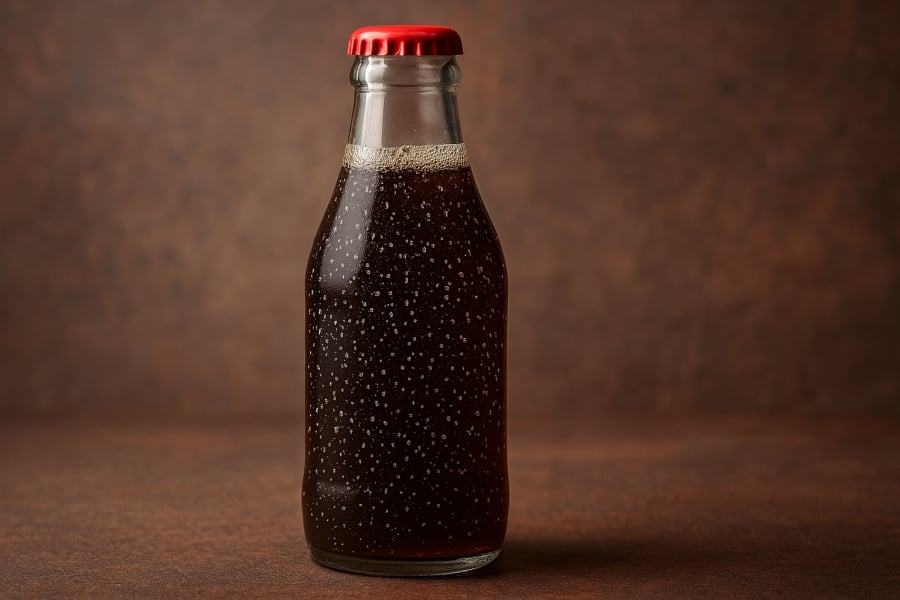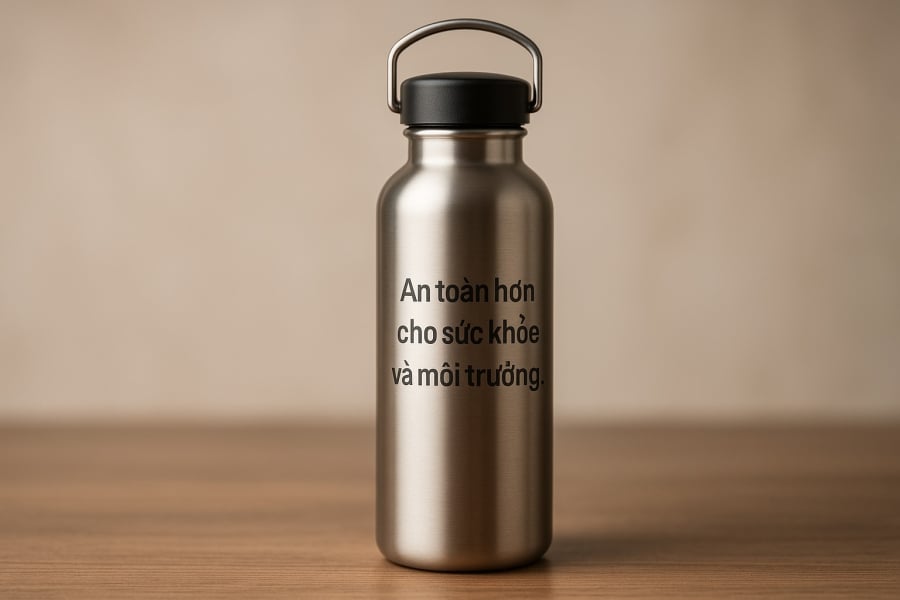When the “Environmental Hero” is Unmasked
For a long time, glass has been considered a “clean” material – non-toxic, reusable, and environmentally friendly. We often assume that drinking from glass bottles is the safest choice for our health. However, a new study by French scientists has shaken this belief.
According to the survey results, on average, each liter of water in a glass bottle contains nearly 100 microplastic particles, while the figure for plastic bottles is only 2.1 particles/liter. Especially, carbonated soft drinks in glass bottles are the most polluted with 103.4 particles/liter – 30 times higher than the same product in plastic bottles.
It’s shocking to know that glass bottles – a symbol of safety – pose a greater risk than the traditional plastic bottles we often wary of.

Microplastics “Hiding” in Glass Bottle Caps
The reason for the abnormally high amount of microplastics in glass bottles lies in a small detail that few people notice: the coating on the outside of the cap.
This coating can be worn down during the opening and closing process or transportation. When scratched, tiny plastic particles will flake off and find their way into the bottle, invisible to the naked eye. These particles are usually only 50 to 100 microns in size – too small to be completely removed during the packaging process.
Harmless as they may seem, over time, these “tiny invaders” can silently accumulate in the body and cause unforeseen health consequences.
Microplastics – The Silent Enemy of Health and Environment
So far, scientists have not been able to determine the exact impact of microplastics on human health. However, the warnings are becoming clearer.
Microplastics can infiltrate the digestive and respiratory systems and lodge in tissues and organs. Some studies also suggest a link between microplastics and inflammation, endocrine disruption, and the risk of cancer. Meanwhile, the environment is also being seriously threatened by the amount of microplastics released from everyday objects – accumulating in soil, water sources, and the food chain.
The problem is that microplastics do not easily degrade. Once dispersed, they can persist for hundreds of years and continue to affect generations to come.
What’s the Solution for Smart Consumers?
Given this reality, the sensible thing to do is not to panic but to act consciously.
If you’re using glass bottles for drinking water, consider switching to insulated bottles or premium plastic bottles designed to minimize microplastic release. These products usually have metal or silicone caps instead of coated ones, reducing the risk.
Additionally, many manufacturers are working to improve the bottling process, such as using clean air streams to blow off microplastic dust from caps or cleaning them with medical alcohol. These measures can reduce microplastic contamination by up to 60% – a significant figure to consider.
For consumers, small changes in daily choices can make a big difference. Prioritize products with clear origins, safe materials, and say no to reusing scratched or broken glass bottles.

Conclusion: Stay Vigilant Before Placing Your Trust
No material is absolutely perfect. The story of microplastics in glass bottles is a gentle reminder that sometimes our long-held beliefs need to be scientifically verified.
Making smart choices not only protects your health but also contributes to preserving the environment for future generations. And most importantly, it’s about living responsibly – for ourselves and for the world.






























